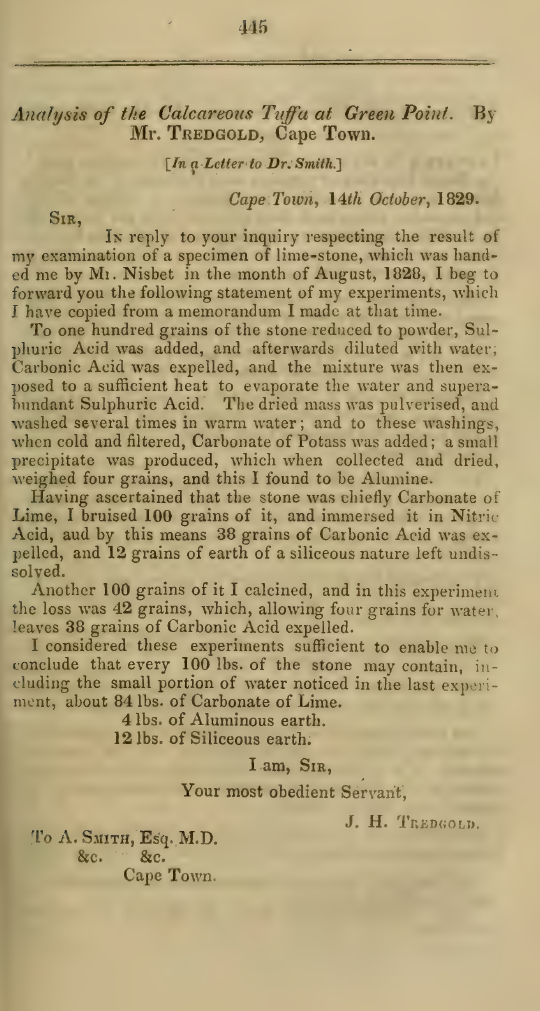Analysis of the calcareous tuffa at Green Point
DOI:
https://doi.org/10.21504/saqj.14.2673Keywords:
Calcareous Tuffa, Limestone, Green Point, Cape Town, Geology -- Cape Colony, Mineralogy -- Cape ColonyAbstract
This article is a letter from J. H. Trepgorp to Dr A. Smith, detailing the chemical analysis of a specimen of calcareous tuffa (limestone) collected from Green Point, Cape Town (Cape Colony).
The author performed several experiments on 100-grain samples of the stone:
-
Sulphuric Acid Treatment: This method isolated and measured the Aluminous earth content, which was determined to be 4 grains (4%).
-
Nitric Acid Treatment: This experiment measured the volatile components and the insoluble residue. It expelled 38 grains of Carbonic Acid and left 12 grains (12%) of Siliceous earth undissolved.
-
Calcination: By heating the sample, the total loss of mass was 42 grains. Allowing 4 grains for water, the remaining 38 grains confirm the proportion of Carbonic Acid.
From these results, Mr Trepgorp concluded the approximate composition of the stone per 100 lbs. is:
-
Carbonate of Lime: ≈ 84 lbs.
-
Siliceous Earth: 12 lbs.
-
Aluminous Earth: 4 lbs.
-
(Including a small portion of water)
The analysis identifies the stone as being primarily Carbonate of Lime.
Downloads

